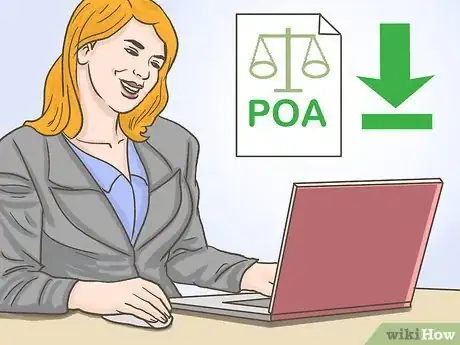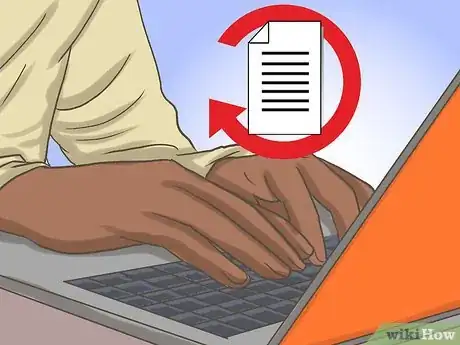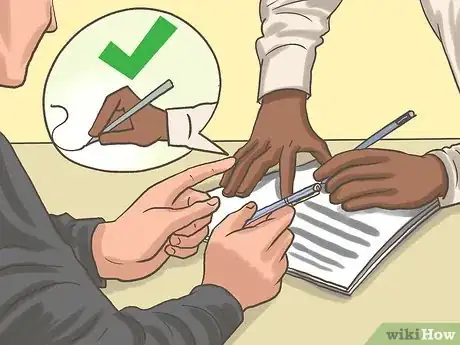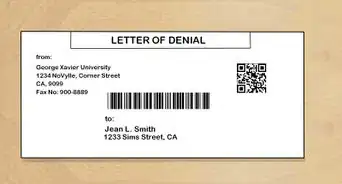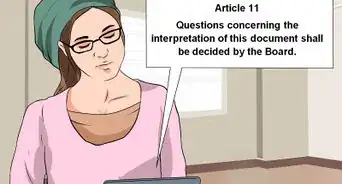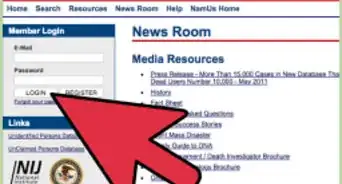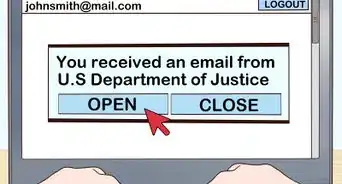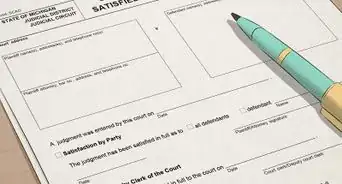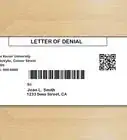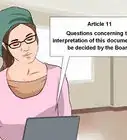This article was written by Jennifer Mueller, JD. Jennifer Mueller is an in-house legal expert at wikiHow. Jennifer reviews, fact-checks, and evaluates wikiHow's legal content to ensure thoroughness and accuracy. She received her JD from Indiana University Maurer School of Law in 2006.
This article has been viewed 141,199 times.
This article is written for persons living in the United States. Powers of Attorney in other jurisdictions have different legal requirements, and you should check the laws of your jurisdiction prior to making or accepting a Power of Attorney if you do not live in the United States.
When someone gives you power of attorney (POA) in the United States, it means you have the authority to access their financial accounts and sign financial or legal documents on their behalf. POA is given using a legal POA document that has been drafted and executed according to your state's law. When the document goes into effect, you become that person's attorney in fact, which means you act as their agent. Generally, to sign documents in this capacity, you will sign the principal's name first, then your name with the designation "attorney in fact" or "power of attorney."[1]
Steps
Becoming Attorney-in-Fact
-
1Check for forms or templates. Most states have basic templates available on the state court's website. You can use these templates to create a POA document for less complex situations. You can also buy legal forms packages that include POA forms you can use.[2]
- Make sure any forms or templates you use are designed to be valid under your state's law.
- Read over the POA duties listed on the form to confirm that the document covers everything you want the POA to be able to do. If you will be acting as someone else's agent, make sure you're comfortable doing everything listed in the document if necessary.
-
2Consult an attorney for more complex situations. Most basic POA templates and forms don't cover every possible circumstance. An attorney who specializes in trusts and estates can assist you if you need a POA for reasons not covered in the basic form.
- For example, in many states a basic POA document won't allow the agent to act on the principal's behalf in real estate transactions.
Advertisement -
3Draft your POA agreement. Your POA agreement should specify exactly when the POA will go into effect, how long it will last, and what duties and powers the agent has under the agreement.
- Some POA agreements go into effect when signed, while others are designed to go into effect only when a specified event happens. For example, you may have a POA agreement that only goes into effect when the principal becomes incapacitated or incapable of handling their financial affairs.
- The forms in some states list every possible power an agent can have under a POA agreement. It is your responsibility to check off the powers the agent will have under this specific agreement. This means if you don't check anything, the agent won't have any powers. For other forms or templates, you simply list the powers the agent has.
-
4Execute your POA agreement. A POA agreement, to be valid, must be signed by both the agent and the principal. The process of signing the POA agreement is dictated by your state's law, and typically requires witnesses or a notary public.
- Typically both the principal and the agent must sign the POA document at the same time. If you need to have the document notarized, you should plan to both appear before the notary together.
- If you're using a form or template, look to see if there is space at the bottom for witness signatures or a notary seal. This will tell you whether you need to have the document notarized, or bring additional witnesses.
-
5File copies of the POA where necessary. You can plan ahead by filing the POA document with banks and other financial institutions or government agencies where the principal has an account. This will make it easier for you to sign as a power of attorney on their behalf.[3]
- Set up a file for your own records that includes your POA document and information about the various accounts the principal has, including the names of the financial institutions and their account numbers.
-
6Seek a conservatorship if the person is already incapacitated. In some circumstances, someone may need you to act on their behalf, but they are incapable of signing the POA document. If this is the case, you need to file a petition in your local court for a "conservatorship," or adult guardianship.[4]
- Consult an attorney if you believe you need to file a petition for a conservatorship. It's possible the person has already appointed a POA, such as through a living will, or there may be other issues.
Acting as Attorney-in-Fact
-
1Bring your POA document with you. Even if you already filed a copy of the POA document with the financial institution, take along a copy and the original when you go to sign anything as a power of attorney.[5]
- Some banks or financial institutions may want to see the original document before they allow you to sign for the principal.
- You also want to bring a government-issued photo ID with you to prove that you are the person who signed the POA document. You may want to call ahead of time and find out if you'll need to bring anything else with you.
-
2Ask about the preferred format. Government agencies, or banks and other financial institutions, may require a POA signature to be written in a certain way. If you don't follow their formatting, they won't accept the signature as valid.[6]
- If the institution has no specific policy or preference, you can use the general format of the principal's name, then your name, followed by either "attorney in fact" or "power of attorney."
-
3Sign the principal's name first. When you sign as power of attorney, you want to first sign the principal's full legal name. For bank or other financial accounts, check to see how their name is listed on the account and sign it the same way.[7]
- For example, suppose you have POA for your aunt, Sally S. Sunshine. Her bank account is listed under "Sally Sunshine." When you sign as a power of attorney, you would first sign her name, "Sally Sunshine," without her middle initial.
- Sign the principal's name exactly as you would normally sign your own name. You may want to print the name after your cursive but the signature should be a cursive signature, not print.
-
4Sign your own name after the principal's name. On the line below the principal's name, you will write the word "by" and then sign your own name. This indicates that you have signed the principal's name on their behalf.[8]
- For example: "Sally Sunshine, by Molly Moon."
-
5Indicate your authority to sign. Following your name, you need to add a word or phrase that shows how you have the power to legally sign the principal's name for them. Without this, your signature won't be binding. Typically you'll use the phrase "attorney in fact" or "power of attorney."[9]
- For example: "Sally Sunshine, by Molly Moon, attorney in fact."
- You may also be able to use the abbreviation "POA." However, don't simply use the word "attorney" or abbreviation "atty." This typically infers that you are the person's lawyer, or attorney at law.
- You should not sign your name or the other person's name without indicating that you are signing under a power of attorney. Doing so can result in civil or criminal penalties.
References
- ↑ http://elder.findlaw.com/elder-care-law/power-of-attorney-for-financial-matters.html
- ↑ http://www.mncourts.gov/help-topics/power-of-attorney.aspx
- ↑ https://www.americanbar.org/groups/real_property_trust_estate/resources/estate_planning/power_of_attorney.html
- ↑ https://www.rocketlawyer.com/article/how-to-get-a-power-of-attorney-for-a-sick-parent-cb.rl
- ↑ https://www.americanbar.org/groups/real_property_trust_estate/resources/estate_planning/power_of_attorney.html
- ↑ http://elder.findlaw.com/elder-care-law/power-of-attorney-for-financial-matters.html
- ↑ http://elder.findlaw.com/elder-care-law/power-of-attorney-for-financial-matters.html
- ↑ http://elder.findlaw.com/elder-care-law/power-of-attorney-for-financial-matters.html
- ↑ http://elder.findlaw.com/elder-care-law/power-of-attorney-for-financial-matters.html
About This Article
To sign as a power of attorney, start by signing the principal's full legal name. If you're dealing with a financial account, sign their name the same way it's listed on the account. Next, write the word "by" on the line below the principal's name and sign your own name. Finally, follow your name with "power of attorney" or "attorney in fact" to show that you have the legal authority to be signing for the principal. To learn how to become someone attorney-in-fact, read on!
